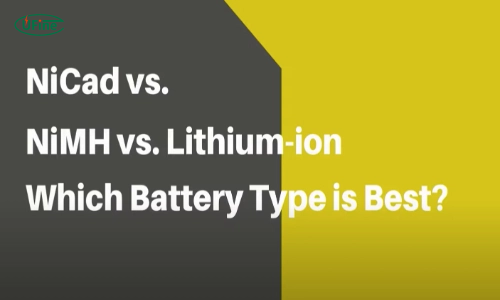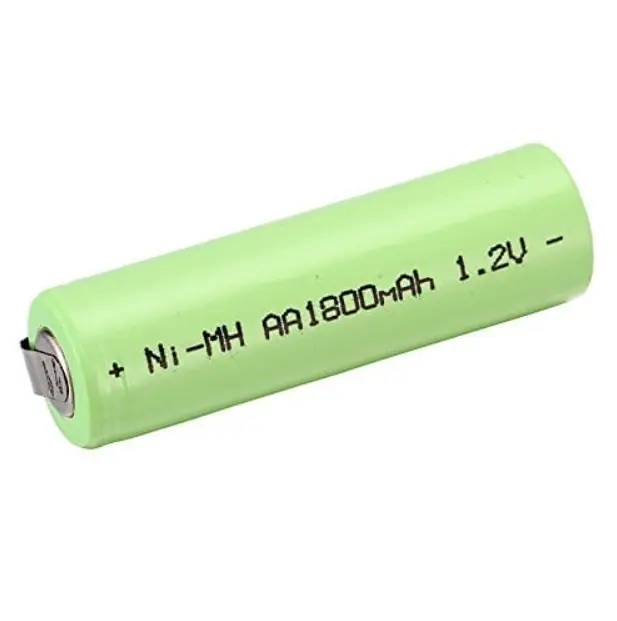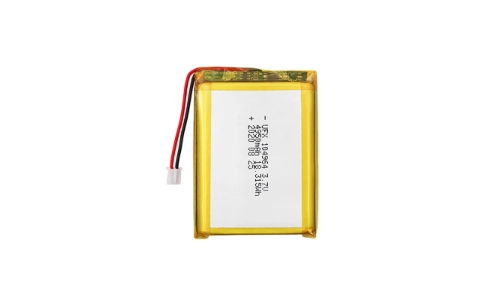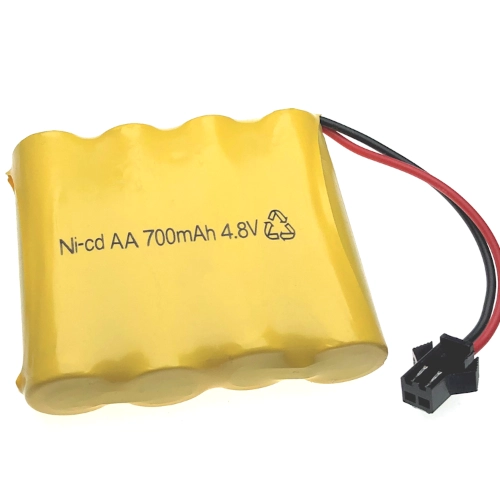
With advancements in technology, different types of batteries have emerged, each with its own set of characteristics and applications. Three popular battery types that often find themselves in the limelight are NiMH (Nickel-Metal hydrogen), Li-Ion (Lithium-Ion), and NiCad (Nickel-Cadmium) batteries. This article will explore the differences between these batteries, including their chemistry, construction, advantages, disadvantages, applications, and a comparative analysis between NiMH and Li-Ion batteries with NiCad batteries.
Part 1. NiMH battery
Chemistry and Construction
NiMH batteries use a combination of nickel oxyhydroxide (NiOOH) as the positive electrode and a hydrogen-absorbing alloy as the negative electrode. The electrolyte is an alkaline solution, typically potassium hydroxide (KOH). The construction involves stacking multiple cells together, where each cell comprises a positive electrode plate, a negative electrode plate, and a separator between them.
Advantages:
- Higher energy density than NiCad batteries, providing longer runtimes.
- There is no memory effect, allowing for partial discharges without affecting overall capacity.
- It is environmentally friendly compared to NiCad batteries due to the absence of toxic cadmium.
- A lower self-discharge rate means they retain their charge longer when not in use.
Disadvantages:
- Lower energy density compared to Li-Ion batteries, resulting in shorter runtimes.
- Slightly higher self-discharge rate than Li-Ion batteries.
- Susceptible to voltage depression if not properly maintained.
- Relatively higher cost compared to NiCad batteries.
Applications
NiMH batteries find applications in various devices, including:
- Portable electronics include digital cameras, handheld gaming consoles, and MP3 players.
- Hybrid and electric vehicles.
- Cordless power tools.
- Emergency backup systems.
- Renewable energy storage.
Part 2. Li-ion battery
Chemistry and Construction
Li-Ion batteries employ lithium compounds as the positive electrode, typically lithium cobalt oxide (LiCoO2), and carbon-based materials as the negative electrode. The electrolyte is a lithium salt in an organic solvent. The construction involves stacking multiple cells together, similar to NiMH batteries.
Pros:
- High energy density, providing longer runtimes compared to NiMH and NiCad batteries.
- There is no memory effect, similar to NiMH batteries.
- Lower self-discharge rate than NiMH batteries.
- They are lightweight and compact, making them ideal for portable devices.
Cons:
- Higher cost compared to NiMH and NiCad batteries.
- They are sensitive to high temperatures, affecting their performance and lifespan.
- Built-in protection circuits are required to prevent overcharging and over-discharging.
- Aging and capacity degradation over time necessitate eventual replacement.
Applications
Li-Ion batteries power various devices and industries, including:
- Smartphones, tablets, and laptops.
- Electric vehicles.
- Uninterruptible power supplies (UPS).
- Aerospace and aviation applications.
- Renewable energy storage systems.
Part 3. NiCad battery
Chemical Composition
NiCad batteries consist of a nickel hydroxide (Ni(OH)2) positive electrode and a cadmium (Cd) negative electrode. The electrolyte comprises a potassium hydroxide (KOH) solution. The construction involves individual cells connected in series or parallel to achieve the desired voltage and capacity.
Strengths:
- High discharge rates, making them suitable for applications requiring quick bursts of power.
- Tolerant to extreme temperatures, allowing them to operate in harsh environments.
- Long lifespan with a high number of charge-discharge cycles.
- Lower cost compared to NiMH and Li-Ion batteries.
Weaknesses:
- Memory effect, causing a decrease in overall capacity if not fully discharged before recharging.
- Toxic cadmium is present, posing environmental concerns during disposal or recycling.
- Higher self-discharge rate compared to NiMH and Li-Ion batteries.
- Relatively lower energy density, resulting in shorter runtimes.
Common Uses
NiCad batteries find applications in various devices and industries, including:
- Cordless power tools.
- Two-way radios.
- Emergency lighting systems.
- Medical devices.
- Hobbyist and consumer electronics.
Part 4. Comparison of NiMH and li-ion batteries with nickel-cadmium batteries
When comparing NiMH and Li-Ion batteries with NiCad batteries, several vital factors come into play. Let’s take a closer look at the following aspects:
Energy Density:
Li-Ion batteries offer the highest energy density, providing longer runtimes than NiMH and NiCad batteries. NiMH batteries come second in energy density, while NiCad batteries have the lowest energy density.
Memory Effect:
NiMH and Li-Ion batteries exhibit no memory effect, allowing for partial discharges without impacting overall capacity. In contrast, NiCad batteries suffer from memory effects, requiring total discharges before recharging to maintain optimal performance.
Self-Discharge Rate:
NiMH batteries have a lower rate than NiCad batteries, meaning they can retain their charge longer when not in use. Li-Ion batteries have an even lower self-discharge rate than NiMH batteries.
Environmental Impact:
NiMH batteries are considered more environmentally friendly than NiCad batteries due to the absence of toxic cadmium. Li-Ion batteries also do not contain cadmium, but their environmental impact lies in the extraction and disposal of lithium, which requires proper recycling methods.
Cost:
NiCad batteries are generally more affordable than NiMH and Li-Ion batteries. NiMH batteries are slightly more expensive than NiCad batteries, while Li-Ion batteries have the highest cost.
Applications:
NiMH batteries find applications in portable electronics, hybrid and electric vehicles, cordless power tools, emergency backup systems, and renewable energy storage. People widely use Li-Ion batteries in smartphones, laptops, electric cars, UPS systems, aerospace applications, and renewable energy storage. Cordless power tools, two-way radios, emergency lighting systems, medical devices, and consumer electronics commonly feature NiCad batteries.
Lifespan:
NiMH and Li-Ion batteries generally have a longer lifespan with more charge-discharge cycles than NiCad batteries.
Weight and Size:
Li-Ion batteries are lightweight and compact, making them ideal for portable devices. NiMH batteries are slightly heavier and more prominent. NiCad batteries are bulkier and heavier than NiMH and Li-Ion batteries.
Part 5. FAQs
-
Are NiCad and NiMH batteries the same?
NiCad (Nickel-Cadmium) and NiMH (Nickel-Metal Hydride) batteries are different. NiMH batteries typically have higher energy density and are less prone to memory effects than NiCad batteries. -
What is the difference between lithium-ion and NiCd batteries?
The main difference is the chemistry. Lithium-ion batteries offer higher energy density, lighter weight, and longer lifespan than NiCd (Nickel-Cadmium) batteries. Additionally, lithium-ion batteries do not suffer from memory effects like NiCd batteries. -
Is Lithium Battery better than NiMH?
Lithium-ion batteries are generally better than NiMH (Nickel-Metal Hydride) batteries due to their higher energy density, lighter weight, and longer lifespan. -
Which is better, Li-Ion or NiMH or NiCd?
Lithium-ion (Li-Ion) batteries are typically considered the best choice among the three options. They offer higher energy density, lighter weight, and longer lifespan than NiMH (Nickel-Metal Hydride) and NiCd (Nickel-Cadmium) batteries. -
What is the lifespan of NiMH vs Li-ion batteries?
The lifespan of NiMH (Nickel-Metal Hydride) batteries is generally shorter than that of lithium-ion (Li-ion) batteries. NiMH batteries typically last for around 500 to 1000 charge cycles. Lithium batteries can last 500 to 2000 or more, depending on usage and conditions. -
How long will NiMH batteries last?
The lifespan of NiMH (Nickel-Metal Hydride) batteries can vary depending on factors such as usage patterns, charging practices, and storage conditions. On average, NiMH batteries can last for around 500 to 1000 charge cycles before needing replacement.
Related Tags:
More Articles
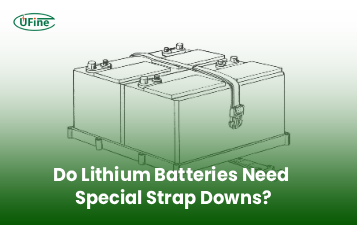
Do Lithium Batteries Require Special Strap Downs? (Safety + Vibration Control)
Discover why lithium batteries require special strap downs to prevent vibration damage, terminal stress, and internal component issues.
Battery Strap Down Safety Tips: Preventing Vibration Damage and Terminal Stress
Follow these expert battery strap down safety tips to prevent vibration damage, terminal stress, and ensure LiFePO4 battery longevity.
How to Choose a Good 18650 Battery with Reliable Quality?
Battery quality defines performance and safety. Ufine Battery shares how to source good 18650 batteries and avoid unstable suppliers.
Can I Use a Universal Battery Strap Down on LiFePO4 Batteries? (Compatibility Guide)
Learn whether universal battery strap downs are compatible with LiFePO4 batteries, and how to install them safely for vibration control.
Battery Strap Down vs Battery Hold-Down Bracket: What’s the Difference?
Compare battery strap downs and hold-down brackets. Learn key differences, installation tips, and which is safer for lithium batteries.
